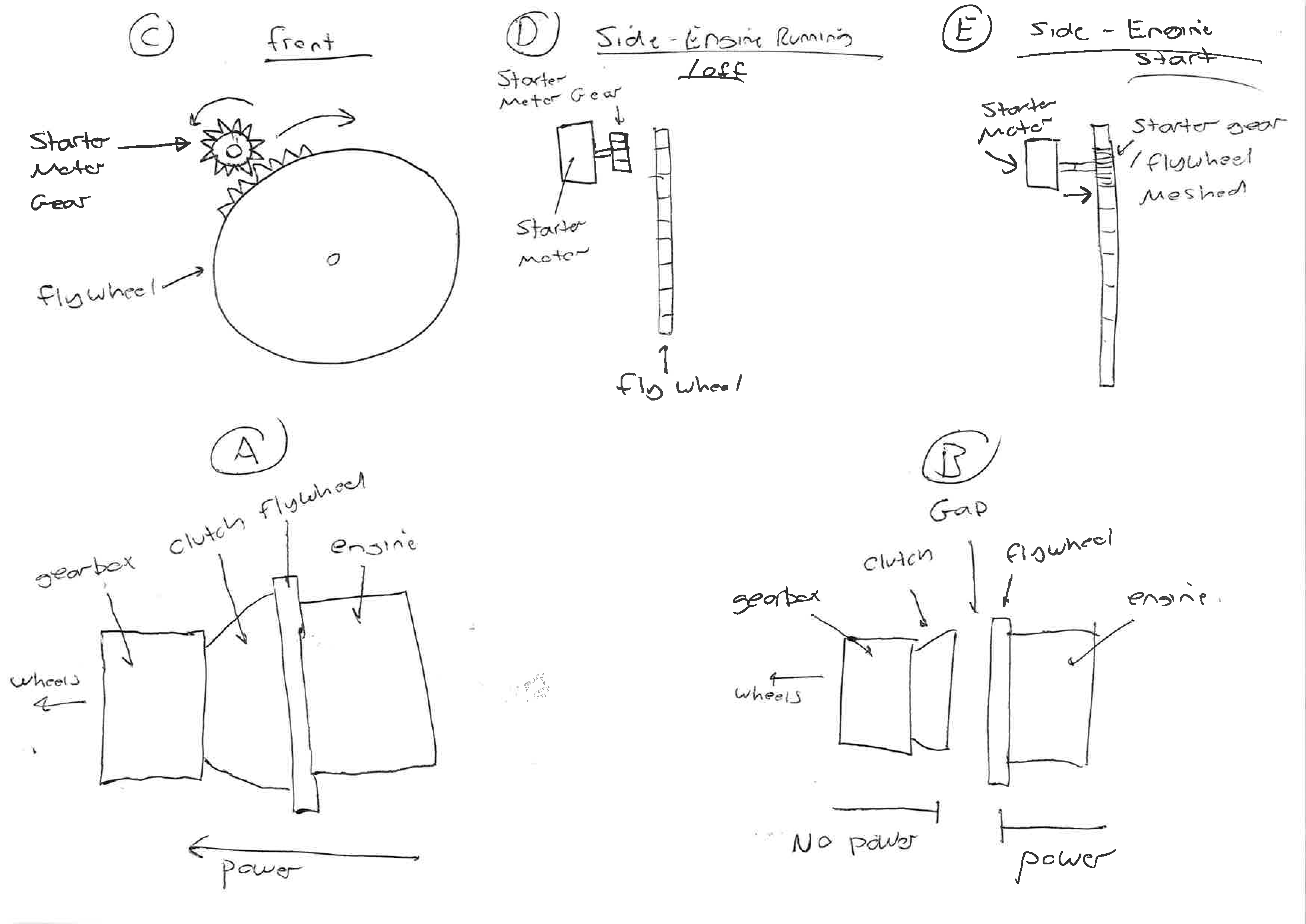#1
Image

Basic engine info:
What does the fly wheel do?
Note: This detail is for a single mass fly wheel, dual mass is a bit different.
A few things:
-It acts as the interface between the clutch and the engine
-It acts as the interface between the starter motor and the engine
-It adds momentum to the rotation of the engine (don’t worry about this bit).
Fig A
Basically the engine can never stop spinning one started, or else you ‘stall’. So when the car is actually driving :
-the engine spins the crank shaft
-the crank shaft spins the fly wheel
-the clutch is pressed against the flywheel and so spins with it
-then finally the clutch spins the gear box that transmits the drive to the wheels.
Fig B
When you change gear you have to separate the engine from the gearbox, else you get a bit crutch so:
-Pressing the clutch pedal pulls the clutch plate away from the flywheel
-the gearbox is separated from the engine allowing you to change gear.
-The engine is allowed to keep spinning.
That is one bit the fly wheel does, the second bit involves starting the car.
Fig C
-The outside of the flywheel has teeth on it.
-The starter motor has a little gear on it that meshes with the teeth on the flywheel.
-When you start the car the starter motor spins (powered by the electrical energy in the battery)
-the spinning of the starter motor turns the flywheel.
-when the fly wheel turns, the entire engine turns over.
-After a few turn overs the engine becomes self-sustaining and does not require the starter motor.
Fig D
Whilst the engine is running, or when it is off, the starter motor is not required. During this time the gear on the motor is retracted and the starter motor and flywheel are not in contact. If you can’t start the car, it may be that the starter motor is not ‘extending ’ to mesh with the flywheel. You can hit it with a hammer sometimes to get it moving as per the AA block.
Fig E
When you want to start the car, you need to get the engine moving somehow. Old cars use a handle and elbow grease, modern cars use electrical energy. When you turn the key the starter motor shoots the start motor gear (called a bendix gear) to mesh with the flywheel. Then the motor spins and starts the engine.
When the engine is running, the starter motor retracts as the engine is now self-sustaining. This is why you get a loud crunch if you turn the key to ignition whilst the engine is running. You have basically shot the bendix gear into the spinning flywheel and it is clattering against the spinning teeth unable to engage.
So in summation, the guy is basically telling you that the teeth on the flywheel are no longer there, so the starter motor cant turn the engine over. Look at a picture of a fly wheel and tell me how likely it is that a lot of the teeth have been stripper off a solid bit of metal.


![]() Back to Forum |
Back to Forum | ![]() Jump to Bottom
Jump to Bottom